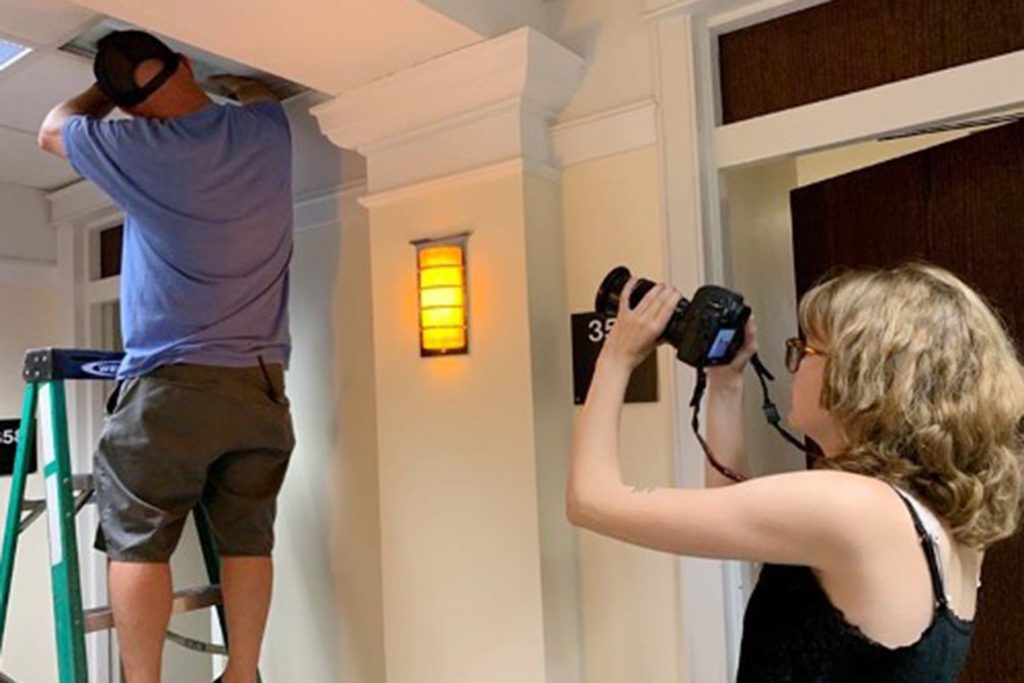Lila Davidson has been a student worker for ITS Communications since March 2022. In this first-person piece, she discusses experiencing her first digital accessibility training with the Digital Accessibility Office, a unit housed within ITS.

But first, a little more about Davidson. What she likes best about her job is the opportunity to connect with people. She enjoys interviewing and writing people-driven content. So far, she’s most enjoyed writing about the release of the fifth season of ITS-led information security podcast Data@Rest. Lately, she has been photographing ITS teams and customers to showcase how the department supports and serves campus.
In August, Davidson will enter her third year at Carolina. She looks forward to continuing to learn about photography, journalism, social media and graphic design from the ITS Communications team.
UNC-Chapel Hill extends far beyond brick sidewalks and Franklin Street. The University maintains a vast digital realm that spans from learning management systems to department websites.
Freshly hired by ITS Communications, I attended a Digital Accessibility Office training in March 2022. Technology is the focus of where I work, but it’s also the foundation of my life as a student. The pandemic forced a transition to online that has shifted the way that we live. To join a Zoom meeting and interact with professors and other students electronically are everyday elements of my college experience. Almost all the content that I create for my classes is digital.
With so much relying on the virtual side of our campus, the digital accessibility awareness training taught me how to take charge of my responsibility to make the University’s classrooms, communications and corners of the internet accessible for everyone.
About the DAO
The acronym DAO stands for Digital Accessibility Office; it’s a campus-wide initiative living within ITS. The DAO’s mission statement ends with a warm, characteristic sentiment: “We enable the University community to deliver accessible digital content and resources with the knowledge that accessibility enhances usability for all y’all!” The team offers digital accessibility trainings in a variety of topics, including web design and social media.
The Digital Accessibility Office offers live online training on a variety of accessibility topics, including captioning, web accessibility basics, social media, Zoom and document remediation. The DAO’s two most popular trainings, Digital Accessibility Awareness and Digital Accessibility in Course Design, are also available as online self-paced courses, perfect for busy schedules.
Experiencing training
The training I attended was hosted by Chelsea Porter, digital accessibility consultant for the DAO. She focused on four categories of disabilities and considerations for each: vision, deafness or hard of hearing, mobility and neurodiversity. One takeaway of the training for me was that making content accessible did not often require an extreme amount of work and overhaul. Rather, some revamping and mindfulness, especially if an individual or team considers accessibility in the beginning stages of a project. So many changes were simple, like adding captions or layout consistency. I learned rules for website design and how to write effective alternative text. These things feel crucial for me to know as someone who creates digital content that is being viewed and read by others.
Why training matters
The training taught me about laws and policies that require accessibility. But even more, Porter presented why incorporating it means a more hopeful digital future as a whole. The DAO defines accessibility as “a way of thinking and an ongoing commitment.” With more people learning exactly how to make content more accessible, we can truly make the digital realm a better place for every one of us. Because, as Porter emphasized, digital accessibility is “essential for some, useful for all.”
Applying these lessons
Like many other students, I have a personal website that acts as my portfolio. The training helped me to realize that my website is totally inaccessible. It was a project that I was proud of, so my first reaction was guilt about my oversight.
My second was a commitment to change it. I had thought that my worded graphics were attractive, but I now know that text-to-speech technology cannot read them.
My goal now is to re-design the pages to be accessible and provide alt text and enhance the color contrast. I know that once I finish that, I won’t be done. I’ll always be learning new ways to get better about accessibility. I’ve signed up for more DAO trainings so that I can continue to make my website more accessible as well as all other digital content I produce. I, like many of us, still have so much left to learn from the resources the DAO team offers.
Lila Davidson is pursuing an English major and hopes to graduate with minors in media and journalism and creative writing, with a concentration in poetry. Her passions at Carolina largely revolve around her poetry writing classes. Her poem “Tilly” was recently featured in a series of social media posts by the Department of English and Comparative Literature. This summer, Davidson started indoor rock climbing and became a radio DJ for WXYC, UNC-Chapel Hill’s student-run radio station.
Interested in student employment with ITS? Use JobX to search and apply for roles with ITS Communications and other ITS units. Learn more about jobs in different ITS divisions and hear from students about how they gained real-world experience, new skills and grew their professional network.

